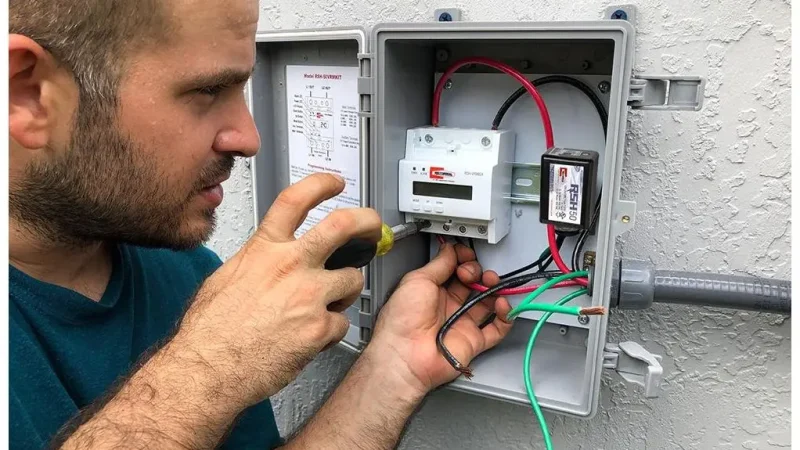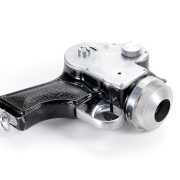Mini split air conditioning systems are one of the most popular ways to cool and heat homes today. They’re energy-efficient, quiet, and versatile, making them ideal for bedrooms, offices, garages, and entire homes. However, like any electronic appliance, a mini split system is vulnerable to power surges.
That’s where a mini split surge protector comes in. It’s a small but powerful device designed to shield your system from electrical spikes that can cause expensive damage. In this article, we’ll explain what a mini split surge protector is, why it’s essential, how to choose the best one, and tips for installation and maintenance.
What Is a Mini Split Surge Protector?
A mini split surge protector is an electrical device installed between your ductless AC system and the power supply. Its job is to block or divert sudden voltage spikes, protecting sensitive components like:
- The compressor
- The control board
- The fan motors
- The thermostat or remote system
Unlike standard appliances, mini splits contain advanced electronics and circuit boards that can easily be fried by even a brief power surge.
Why Do Mini Splits Need Surge Protectors?
Power Surges Are Common
Power surges occur more often than most people realize. They can be caused by:
- Lightning strikes
- Utility grid switching
- Downed power lines
- Household appliances cycling on and off (e.g., refrigerators, dryers)
Mini Splits Are Expensive to Repair
A damaged control board or compressor can cost hundreds—or even thousands—of dollars to replace.
Electronics Are Sensitive
Unlike old-fashioned HVAC systems, ductless mini splits rely heavily on digital components.
Peace of Mind
For a relatively small investment, a surge protector can save your mini split from catastrophic damage.
Benefits of Using a Mini Split Surge Protector
- Protects Your Investment – Extends the life of your ductless AC.
- Prevents Costly Repairs – Surge damage can void warranties and cost as much as a new unit.
- Improves Safety – Reduces risk of electrical fires caused by power spikes.
- Works Automatically – Once installed, it silently protects your system 24/7.
- Affordable Protection – Most surge protectors cost under $100, far less than repair bills.
How a Mini Split Surge Protector Works
- Voltage Monitoring: It constantly monitors the incoming voltage.
- Clamping Action: When voltage exceeds safe levels, the protector diverts excess electricity to the ground.
- Reset or Replace: Some surge protectors automatically reset; others need replacing after a major surge.
Think of it as an insurance policy for your ductless AC system.
Types of Mini Split Surge Protectors
- Whole-House Surge Protectors
Installed at the main electrical panel.
Protects the entire home, including your mini split.
Best for comprehensive coverage.
- Dedicated Mini Split Surge Protectors
Installed directly at the outdoor condenser or indoor unit.
Specifically designed for HVAC systems.
- Plug-In Surge Protectors (less common for mini splits)
Suitable for portable units but not recommended for hardwired ductless systems.
Factors to Consider When Buying a Mini Split Surge Protector
- Joule Rating
Higher joule ratings = more protection.
Look for at least 1000–2000 joules for HVAC systems.
- Response Time
The faster, the better. Good protectors respond in nanoseconds.
- UL Certification
Always choose UL-listed devices for safety compliance.
- Installation Location
Some protectors are designed for outdoor use (weatherproof).
Others are better for indoor installations.
- Compatibility
Make sure it matches the voltage of your mini split (120V or 240V).
- Indicator Lights
LEDs show whether the protector is functioning correctly.
- Warranty
Some manufacturers cover connected equipment up to a certain dollar amount.
Best Mini Split Surge Protectors (2024 Picks)
Here are some top-rated surge protectors frequently recommended for mini splits and HVAC units:
- Intermatic AG3000 – Widely used for HVAC systems; affordable and reliable.
- Square D by Schneider Electric HEPD80 – Whole-house protection.
- Eaton CHSPT2ULTRA – High joule rating, durable design.
- Siemens FS140 – Premium whole-home surge protection.
Tip: If you’re installing a new mini split, ask your HVAC contractor to include a surge protector in the installation package.
How to Install a Mini Split Surge Protector
Important: Electrical installation can be dangerous. Always hire a licensed electrician if you’re unsure.
General Steps:
- Turn Off Power – Shut off the breaker for safety.
- Mount the Surge Protector – Near the outdoor condenser or electrical panel.
- Connect Wires – Usually two hot wires, a neutral, and a ground.
- Secure and Test – Ensure connections are tight and restore power.
Most installations take less than an hour for a professional.
Maintenance Tips for Mini Split Surge Protectors
- Check Indicator Lights – Replace the unit if the protection light goes off.
- After Major Storms – Inspect for damage.
- Replace Every 3–5 Years – Surge protectors degrade over time.
- Pair With Whole-House Protection – For maximum safety.
Common Myths About Surge Protectors
Myth 1: “Power strips are enough.”
- False. Regular power strips don’t protect against surges.
Myth 2: “I don’t get surges in my area.”
- Surges can happen anywhere—even from inside your home.
Myth 3: “Mini splits have built-in protection.”
- Some may have limited protection, but it’s not enough for large surges.
Cost of a Mini Split Surge Protector
- Dedicated HVAC surge protectors: $50–$120.
- Whole-house surge protectors: $200–$400.
- Installation cost: $100–$250 (if hiring an electrician).
Considering mini splits cost $2,000–$5,000, this is a smart investment.
Who Needs a Mini Split Surge Protector?
- Homeowners in Storm-Prone Areas – Frequent lightning means frequent surges.
- Rural Homes – Less stable grids and longer power lines increase risks.
- Anyone With a New Mini Split – Protect your investment from day one.
- Tech-Savvy Homes – If you already protect TVs and computers, don’t forget your AC.
Conclusion
A mini split surge protector may not be the most exciting purchase, but it’s one of the most important. With power surges becoming more common and mini split systems relying on sensitive electronics, surge protection is essential for keeping your system safe, efficient, and long-lasting.
For less than the price of a single class or service visit, you can protect your entire ductless AC system from costly damage. Whether you choose a dedicated protector or whole-house coverage, the peace of mind is well worth it.
FAQs
1. Do mini splits really need surge protectors?
Yes. Mini splits have sensitive electronics that are highly vulnerable to voltage spikes.
2. Where should a surge protector be installed on a mini split?
Typically at the outdoor condenser unit or electrical panel, depending on the type.
3. Can I install a mini split surge protector myself?
If you’re experienced with electrical work, yes. Otherwise, hire a licensed electrician.
4. How long do mini split surge protectors last?
Around 3–5 years, depending on usage and surge events.
5. What happens if I don’t use a surge protector?
Your mini split is at risk of severe damage from surges, which could cost thousands in repairs or replacements.
Also read: Why Therapists Are Called Shrinks: Origins, Culture, and Meaning









